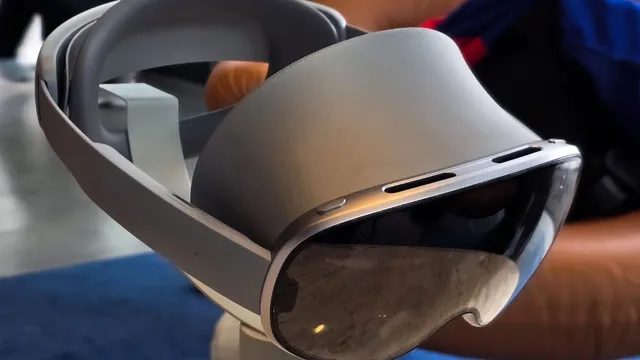- By Alex David
- Thu, 06 Nov 2025 12:43 AM (IST)
- Source:JND
Samsung released its Galaxy XR headset last year in South Korea and the United States, so it looks like it is planning a wider launch campaign. Per a new report from SamMobile, the company intends to make it available to various international markets by 2026, indicating a significant move for Samsung’s efforts in competing with Apple’s Vision Pro and Meta’s Quest Pro in the premium extended reality (XR) sphere.
Samsung Galaxy XR Global Expansion Plans
According to an insider, Samsung will release the Galaxy XR in Germany, France, Canada and the UK towards 2026. The list, however, was not necessarily a final one. Additional territories are said to come in according to production capability, expansion of the app ecosystem and the regional demand for XR devices, sources say.
ALSO READ: WhatsApp To Introduce ‘Strict Account Settings’ For Enhanced Cybersecurity
This phased rollout strategy is similar to what Samsung has done with other new product categories in the past, giving the company time to assess user reception and polish up the software experience before expanding more widely. Assuming the leaks are true, 2026 would see the Galaxy XR’s official global bagging.
Samsung Galaxy XR: Specifications and Features
The Samsung Galaxy XR is the company's most ambitious foray into mixed reality yet. Developed in partnership with Google and Qualcomm, the headset wants to combine premium hardware and intelligent AI-driven software in order to deliver immersive experiences.
Specification | Details |
Chipset | Qualcomm Snapdragon XR2+ Gen 2 |
Operating System | Android XR (developed by Google) |
Display | Dual Micro-OLED panels |
Memory & Storage | 16GB RAM + 256GB internal storage |
Input Methods | Eye tracking, hand gestures, voice commands |
Battery Life | Up to 2 hours of general use / 2.5 hours video playback |
Price | $1,799 (approx. ₹1,58,000) |
Compatibility | Works with select Galaxy phones, PCs, and TVs |
The micro-OLED displays offer what Bozeman says is better contrast and color accuracy, while the Snapdragon XR2+ Gen 2 chipset packs enough processing power to render mixed reality smoothly.
AI-Powered Interaction with Google Gemini
It is one of the most important features of Galaxy XR with its use to Google Gemini for AI Contextual conversation. The headset reads the digital and physical environment around its wearer — dialogue responses, but also ambient noise. For instance, users might be able to ask the headset questions about objects around them, or get context-aware reminders while working or gaming.
Voice, eye and gesture recognition integrated throughout makes interaction more natural and eliminates the need of conventional controllers.
Design and User Experience
Samsung purposely designed the Galaxy XR for Virtual Reality (VR) and Augmented Reality (AR) modes at the user’s choice. Its multi-camera array provides highly accurate spatial mapping, used to create believable AR overlays and immersive virtual environments.
Battery life is on a par with other high-end XR devices, however – you can expect little more than 2-hours of ‘standard use’ or 150 minutes of video playback before needing to connect the Trek to its power pack.
ALSO READ: Apple iPhone Fold: Everything We Know So Far About Apple’s First Foldable iPhone
Competing in a Growing XR Market
As the global XR market is projected to see rapid growth in 2026, Samsung timing may be strategic. And the company’s deep integration across the Galaxy ecosystem — which includes not only smartphones, but tablets and TVs as well — gives it a solid platform for productizing connected experiences that Apple and Meta now own.
The Galaxy XR, with Google’s Android XR platform, Qualcomm’s XR2+ Gen 2 processor, and Samsung hardware design under the hood could be going head-to-head against the Vision Pro priced at $3,499 and Meta Quest Pro about $999.
Final Thoughts
The Galaxy XR from Samsung could mark the company’s significant commitment to the extended reality market. Although its debut is currently only in South Korea and the US, a broader launch for Europe and North America in 2026 may set the stage for it to become a true global contender. All eyes on the future of computing and immersive design, as the from-high-end-visuals-to-AI-interactivity tight ecosystem integration Galaxy XR just might be a gamechangers' leap away.

